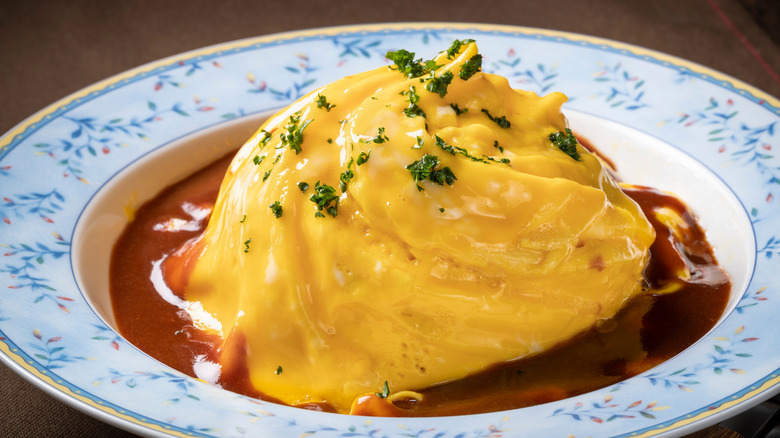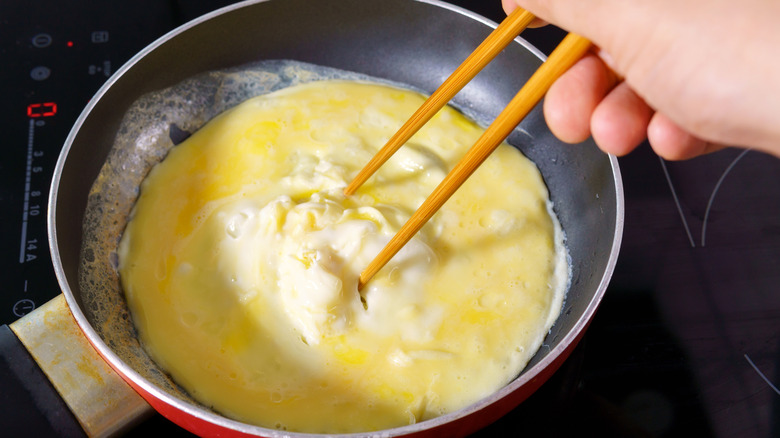The 'Tornado' Swirl Omelet That's Almost Too Satisfying To Eat
Eggs are one of the most versatile foods in cooking. Foodservice Director points out that on top of the many obvious ways to cook an egg, they are also used to glaze pastries, bind batters, and thicken sauces. The American Egg Board says it's unclear just who was first to start eating eggs, but the concept has certainly spread far and wide since the discovery was made.
In Europe alone, there is the Spanish tortilla, the Italian frittata, and the endless ways to prepare a French omelet. Then, from the Middle Eastern world you have the many variations of Shakshuka, which are eggs poached in a tomato stew. And that's not even getting into all of the different ways that eggs are enjoyed across Asia.
Kitchn says that in recent years, one of the most popular egg dishes from Asia is the South Korean "tornado omelet." This preparation method went viral in recent years and while this popularity is no doubt due in part to the satisfying nature of its signature swirl, it also looks outright delicious.
The original omurice
The origins of this dish come from Korea's nearby neighbor of Japan. Kitchn reports that once the tornado omelet is swirled, it's draped over a mound of rice and covered in a sauce. This bears a resemblance to the Japanese staple of "omurice."
New York Times says that omurice is a bit of a cultural mashup. It's a Japanese food that is named by mashing up the English words omelet and rice into one. Osaka Info claims that the dish was invented in Osaka in a Western-style restaurant in 1925. According to legend, a regular customer would often order an omelet with rice, and so one day a cook decided to spice things up by draping the omelet over the rice and decorating it with ketchup.
Omurice has since become a common Japanese food along with the rolled omelet tamagoyaki, which would come decades later. According to Taste Atlas, this dish has become a common feature in bento box lunches and at breakfast.
Omurice doesn't feature the same fascinating swirl, but many elements are very similar to the Korean tornado omelet it would inspire.
How to make a tornado omelet
According to Fine Dining Lovers, the tornado omelet is just another form of the omurice. The method for making the original omurice came to South Korea during the Japanese occupation of the peninsula in the early 20th century. It seems that Korean street cart chefs put their own "swirl" on the original recipe to create the unique appearance of the tornado omelet. It would grow in popularity over the years to become a common food item in Korea.
Kitchn says that this swirl is obtained by twisting the omelet gently with chopsticks while the eggs are cooked. You can watch a demonstration here, and see exactly how the eggs are turned ever so slightly as they are cooked. The uncooked eggs then run off the sides and cook in the pan, adding to the size of the omelet. Kitchn points out that this is easier said than done and doesn't recommend the technique unless you're truly eager to master it. Once twisted sufficiently, the omelet is laid gently over a mound of fried rice and surrounded by a tomato demi-glace, per Fine Dining Lovers, or curry, per Kitchn.
This technique is perfect for anyone hoping to try out a new flavorful egg dish or upgrade their presentation.


